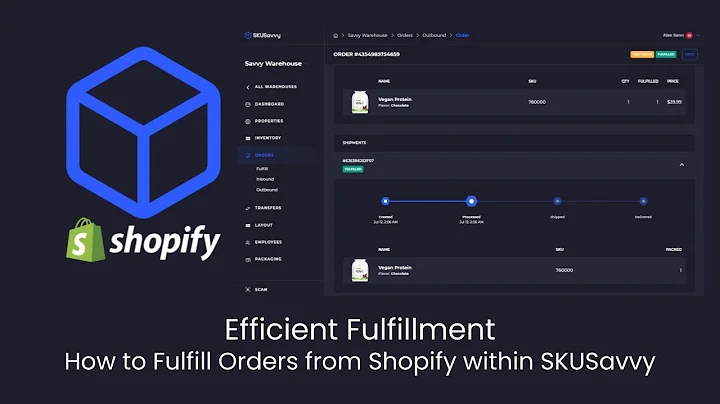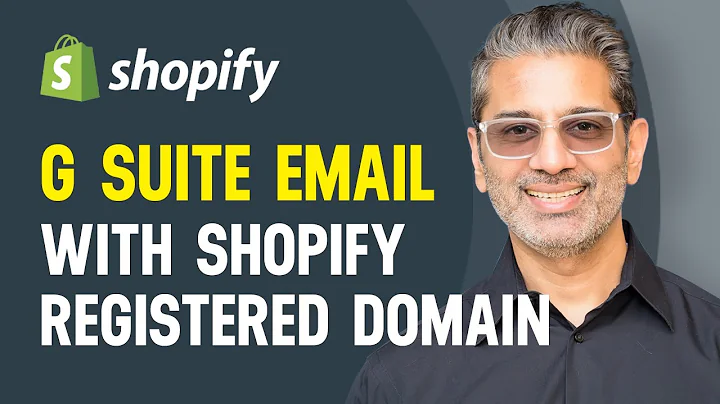Boost Your Business with the Perfect Inventory Strategy
Table of Contents
- Introduction
- Understanding Pre-ordering, Drop Shipping, and Inventory
- 2.1 What is Pre-ordering?
- 2.2 Pros and Cons of Pre-ordering
- 2.3 What is Drop Shipping?
- 2.4 Pros and Cons of Drop Shipping
- 2.5 What is In-house Inventory?
- 2.6 Pros and Cons of In-house Inventory
- Choosing the Right Business Model
- 3.1 Business Models Suitable for Drop Shipping
- 3.2 Business Models Suitable for Pre-ordering
- The Secret Sauce: Pre-order Strategy for Selling Out
- 4.1 Running a Poll and Creating Anticipation
- 4.2 Ordering Sample Inventory for Marketing
- 4.3 Accepting Orders with a Fear of Missing Out (FOMO) Approach
- Conclusion
Pre-orders, Drop Shipping, and Inventory: Finding the Perfect Business Model
In today's competitive business landscape, finding the right strategy to handle inventory can make or break the success of your brand. With the rise of pre-ordering and drop shipping in the e-commerce world, it's essential to understand the pros and cons of each method and determine which business model suits your brand's needs.
1. Introduction
Running an online business requires careful consideration of how you handle your inventory. Should you opt for pre-ordering, where customers pay for items before they are in stock, or is drop shipping more viable, relying on vendors to directly ship products to customers? Alternatively, you may prefer managing in-house inventory, giving you control over shipping times and quality checks. In this article, we will explore the differences between these three methods and help you choose the right business model for your brand.
2. Understanding Pre-ordering, Drop Shipping, and Inventory
2.1 What is Pre-ordering?
Pre-ordering involves allowing customers to purchase items that are not yet in stock. These orders are fulfilled once the items become available or on a predetermined date. This method is often employed by clothing companies or businesses that need to gauge demand before committing to inventory.
2.2 Pros and Cons of Pre-ordering
Pre-ordering carries several advantages for businesses. Firstly, customers' payments cover the cost of inventory upfront, eliminating the need for businesses to invest their own capital. Additionally, pre-ordering reduces the risk of ordering the wrong quantities of products, optimizing inventory management. However, delayed shipment times and potential customer dissatisfaction are drawbacks to consider when using this method.
2.3 What is Drop Shipping?
Drop shipping is a business model where the retailer does not hold inventory but instead transfers customer orders to a third-party vendor to fulfill and ship directly to the customer. This method allows entrepreneurs to run a business from anywhere without investing in inventory or managing shipping logistics.
2.4 Pros and Cons of Drop Shipping
Drop shipping provides significant advantages, such as low upfront costs, as retailers only pay for products once customers place orders. The ability to operate from anywhere and leverage the expertise of vendors also makes drop shipping an attractive option. However, lack of control over product quality, longer shipping times, and potential issues with vendors are downsides to consider.
2.5 What is In-house Inventory?
In-house inventory refers to the traditional approach of purchasing and storing products before accepting customer orders. Retailers with in-house inventory have more control over the entire process, from quality checks to fast shipping and personalized packaging.
2.6 Pros and Cons of In-house Inventory
Managing in-house inventory offers advantages like the ability to offer fast shipping and maintain quality control. With inventory on hand, retailers can meet customer demands promptly. However, high upfront costs, the need for storage space, and the complexity of fulfillment operations are potential drawbacks to consider.
3. Choosing the Right Business Model
Selecting the optimal business model depends on various factors, including the nature of your products and your long-term goals. While drop shipping may be suitable for businesses offering small items like phone cases or books, it may not be ideal for industries reliant on quality control, such as hair or cosmetic products. On the other hand, pre-ordering can benefit clothing companies that need to gauge demand before manufacturing or bulk ordering items.
3.1 Business Models Suitable for Drop Shipping
If you sell small items like phone cases, pens, or trinkets, drop shipping can be a viable option. These products usually have shorter shipping times, minimizing customer dissatisfaction. Home decor items can also work well with drop shipping, as customers often prioritize aesthetics over quick delivery.
3.2 Business Models Suitable for Pre-ordering
Pre-ordering is an effective strategy for businesses that manufacture items or need to determine demand before committing to inventory production. Clothing companies, for instance, can use pre-ordering to understand which designs or styles are popular among customers and avoid overstocking.
4. The Secret Sauce: Pre-order Strategy for Selling Out
Believe it or not, you can create immense anticipation and generate significant sales even with pre-order items. By implementing a strategic approach, you can sell out your pre-order stock successfully. Here's how:
4.1 Running a Poll and Creating Anticipation
Start by running a poll to gauge customer interest in a specific product. This will give you an idea of potential demand and help you decide how much inventory to order. Following this, create anticipation for the pre-order item by conducting an in-house photo shoot and producing compelling content for platforms like TikTok and Instagram Reels.
4.2 Ordering Sample Inventory for Marketing
To showcase the quality and desirability of your pre-order item, order a small sample inventory for marketing purposes. Use these samples to take high-quality images, create engaging social media content, and share sneak peeks with your audience. This will generate excitement and drive pre-order sales.
4.3 Accepting Orders with a Fear of Missing Out (FOMO) Approach
When it's time to accept pre-orders, limit the timeframe to a weekend period. This creates a sense of urgency and triggers the fear of missing out (FOMO) among customers. Utilize countdown timers on your website and emphasize that orders will only be accepted during this specific timeframe. Incentivize customers by offering early-bird discounts or exclusive perks and ensure you communicate that it is a pre-order arrangement.
5. Conclusion
Finding the perfect business model for your brand requires careful consideration of various factors. By understanding the differences between pre-ordering, drop shipping, and managing in-house inventory, you can make an informed decision that aligns with your product offerings and long-term goals. Implementing the right strategy, such as a well-executed pre-order approach, can generate significant sales and set your brand apart in the competitive e-commerce landscape.
Highlights
- Understand the differences between pre-ordering, drop shipping, and managing in-house inventory.
- Consider the pros and cons of each business model to determine the best fit for your brand.
- Choose a suitable business model based on your product offerings and long-term goals.
- Implement a pre-order strategy for selling out, including running polls, creating anticipation, and accepting orders with a fear of missing out (FOMO) approach.
FAQ
Q: How do I decide which business model is best for my brand?
A: Consider the nature of your products, industry, and long-term goals. Evaluate the pros and cons of each business model and determine which aligns best with your brand's requirements and objectives.
Q: Can I use drop shipping for any type of business?
A: Drop shipping works well for businesses that sell small items or prioritize flexibility and location independence. However, industries with a strong emphasis on quality control or fast shipping may not benefit from drop shipping.
Q: Is pre-ordering a good strategy for clothing companies?
A: Yes, pre-ordering can be an effective strategy for clothing companies as it allows them to gauge demand before manufacturing or ordering bulk inventory. This helps prevent overstocking and reduces the risk of investing in unwanted items.
Q: How can I generate anticipation for pre-order items?
A: Use engaging content on platforms like TikTok and Instagram Reels. Conduct an in-house photo shoot with sample inventory, take high-quality images, and share sneak peeks to create excitement among your audience.
Q: Should I limit the timeframe for accepting pre-orders?
A: Yes, setting a specific timeframe for pre-orders creates a sense of urgency and triggers the fear of missing out (FOMO) among customers. Use countdown timers on your website and communicate that orders will only be accepted during this period.
Q: What are the advantages of in-house inventory?
A: In-house inventory allows for faster shipping, quality control, and personalized packaging. Retailers have more control over the entire process, from storing products to fulfilling orders promptly. However, it requires higher upfront costs and storage space.
Q: How can I ensure a successful pre-order rollout?
A: Conduct thorough market research, run polls to gauge interest, create engaging content, and communicate with transparency and integrity. Implement countdown timers and offer early-bird discounts to incentivize customers to place pre-orders during the specified timeframe.






















